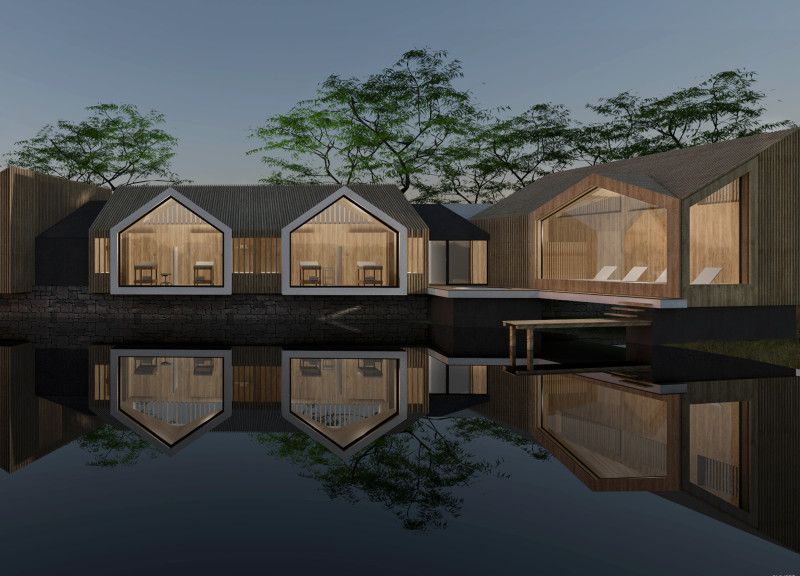5 key facts about this project
The primary function of the Blue Clay Country Spa includes treatment and therapy rooms, accommodation areas, communal spaces, and facilities for dining. Each component is strategically designed to promote relaxation and community interaction, ensuring that visitors have access to both private and social experiences. The architectural layout fosters an intuitive flow between spaces, enhancing the user's experience throughout the facility.
The design stands out through its unique integration of the natural environment. Extensive use of glass allows for ample natural light and unobstructed views of the lush forest surroundings, which plays a crucial role in the therapeutic aspects of the spa. This design approach minimizes the barrier between indoor and outdoor spaces, inviting nature inside and providing a calming atmosphere.
Additionally, the project employs sustainable architectural practices. The use of wood for structural elements creates a warm ambiance while ensuring the facade remains visually aligned with traditional Latvian aesthetics. Concrete is utilized for its durability, while biosustainable practices, such as solar energy integration, further enhance the project’s commitment to environmental stewardship. These elements work collectively to create a facility that is not only functional but also eco-friendly.
The modular design of the Blue Clay Country Spa allows for flexibility in space usage. This modularity not only optimizes the construction approach but also emphasizes the potential for adaptability in the future. Careful attention to acoustic privacy in therapy rooms ensures that the spa experience remains tranquil and conducive to relaxation.
Overall, the Blue Clay Country Spa exemplifies an architectural design that prioritizes user experience, sustainability, and engagement with the surrounding landscape. For a more detailed understanding of the project’s architectural plans and sections, as well as further insights into the architectural concepts and ideas, readers are encouraged to explore the full presentation of the project.


























